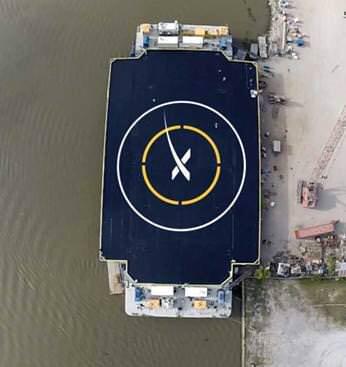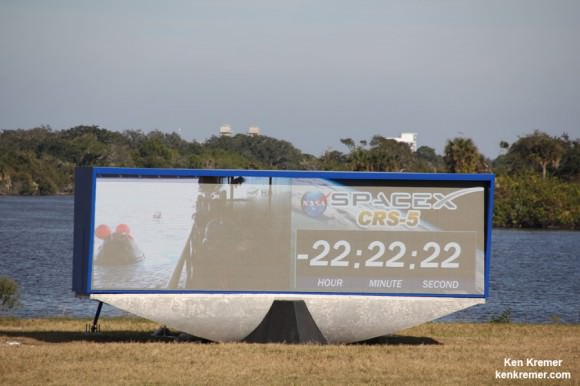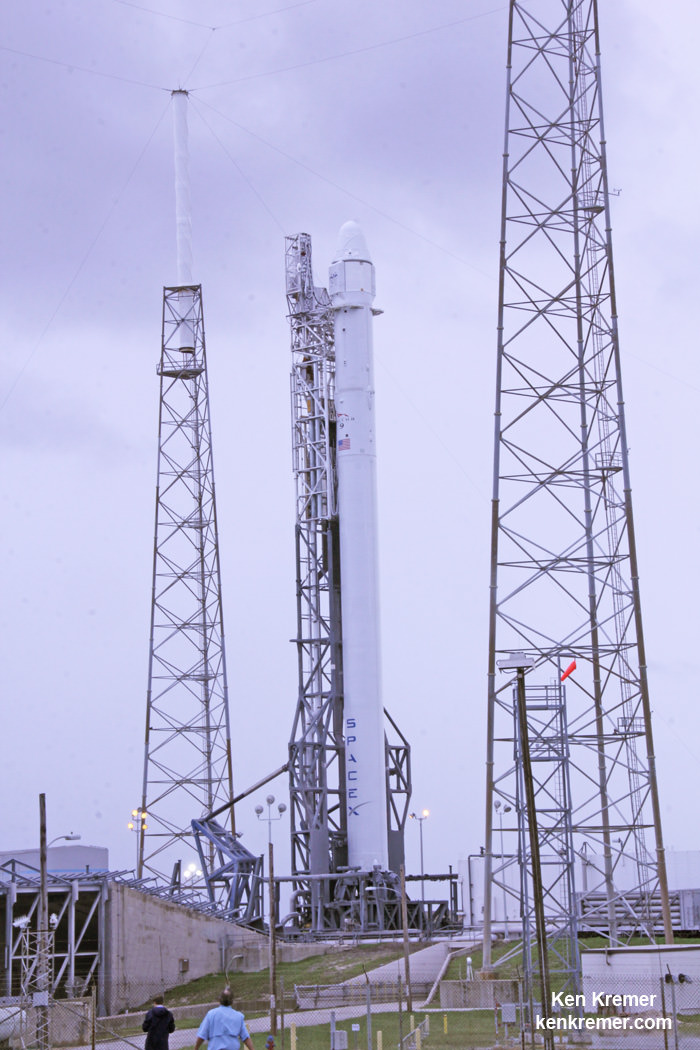KENNEDY SPACE CENTER, FL – Due to technical problems encountered during a hot fire test of the first stage engines this week with the SpaceX Falcon 9 rocket, the planned Dec. 19 launch of the commercial rocket and NASA contracted Dragon cargo freighter to the International Space Station (ISS) on a critical resupply mission has been postponed a few weeks into the new year to Jan. 6 at the earliest “out of an abundance of caution,” SpaceX officials told Universe Today.
Prior to every launch, SpaceX performs an internally required full countdown dress rehearsal and hot fire test of the first stage propulsion systems.
The hot fire test attempted on Tuesday “did not run for its full duration” of about three seconds, SpaceX spokesman John Taylor confirmed to me.
Therefore SpaceX and NASA managers decided to postpone the launch in order to run another static fire test.
“We are opting to execute a second static fire test prior to launch,” Taylor said.
In light of the catastrophic failure of the Orbital Sciences Antares rocket and Cygnus cargo freighter, everything must be done to ensure a launch success.
Due to the large amount of work required to test and analyze all rocket systems and the impending Christmas holidays, the earliest opportunity to launch is Jan. 6.

The SpaceX Falcon 9 rocket carrying the Dragon cargo freighter had been slated to liftoff on its next unmanned cargo run dubbed CRS-5 to the ISS under NASA’s Commercial Resupply Services (CRS) contract.
Here is the full update from SpaceX.
“While the recent static fire test accomplished nearly all of our goals, the test did not run the full duration. The data suggests we could push forward without a second attempt, but out of an abundance of caution, we are opting to execute a second static fire test prior to launch.”
“Given the extra time needed for data review and testing, coupled with the limited launch date availability due to the holidays and other restrictions, our earliest launch opportunity is now Jan. 6 with Jan. 7 as a backup.

“The ISS orbits through a high beta angle period a few times a year. This is where the angle between the ISS orbital plane and the sun is high, resulting in the ISS’ being in almost constant sunlight for a 10 day period.
“During this time, there are thermal and operational constraints that prohibit Dragon from being allowed to berth with the ISS. This high beta period runs from 12/28/14-1/7/15”
“Note that for a launch on 1/6 , Dragon berths on 1/8.”
“Both Falcon 9 and Dragon remain in good health, and our teams are looking forward to launch just after the New Year.”
Watch for Ken’s ongoing SpaceX launch coverage from onsite at the Kennedy Space Center.
Stay tuned here for Ken’s continuing Earth and planetary science and human spaceflight news.

